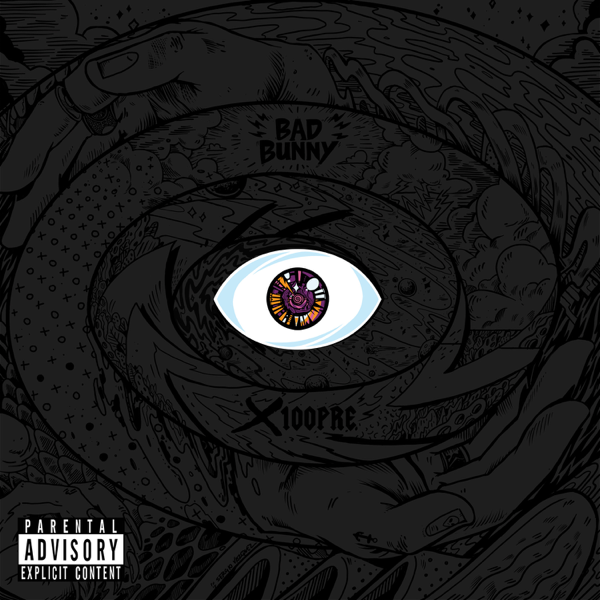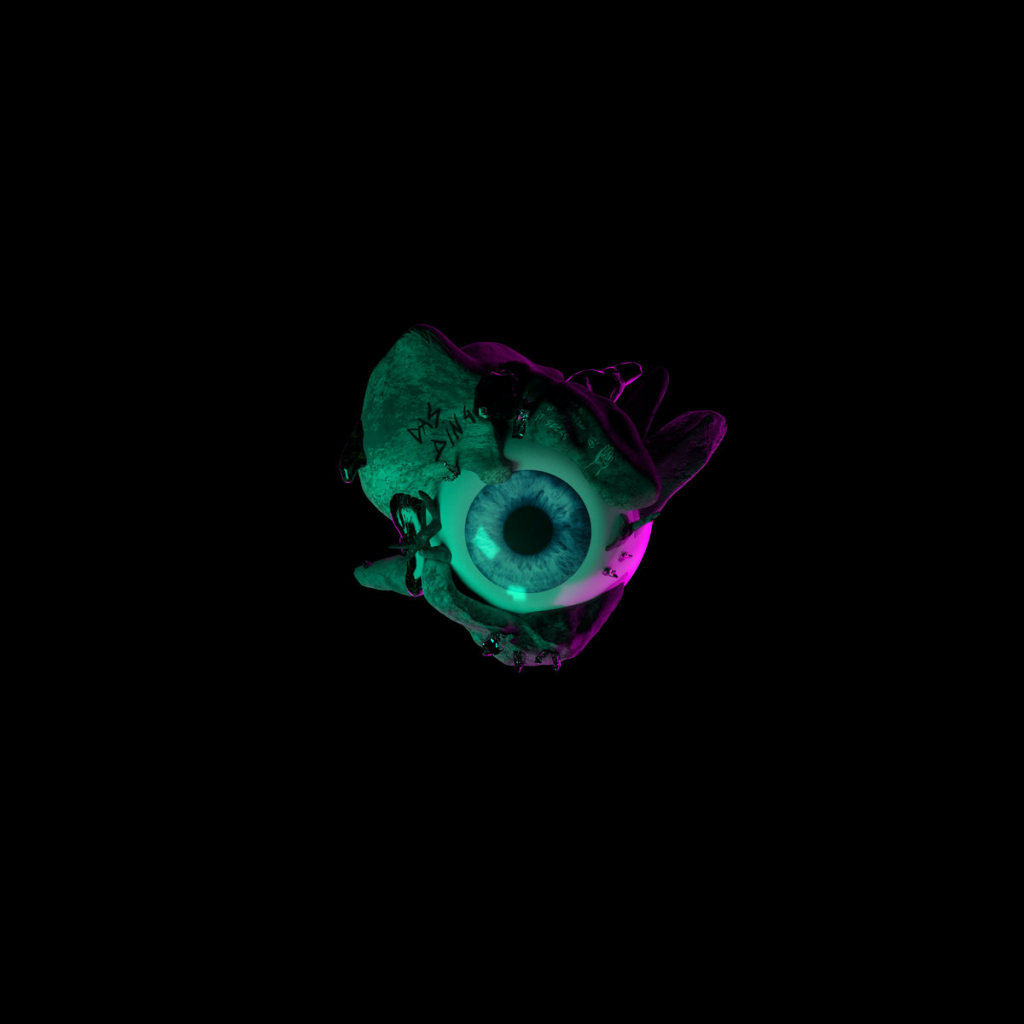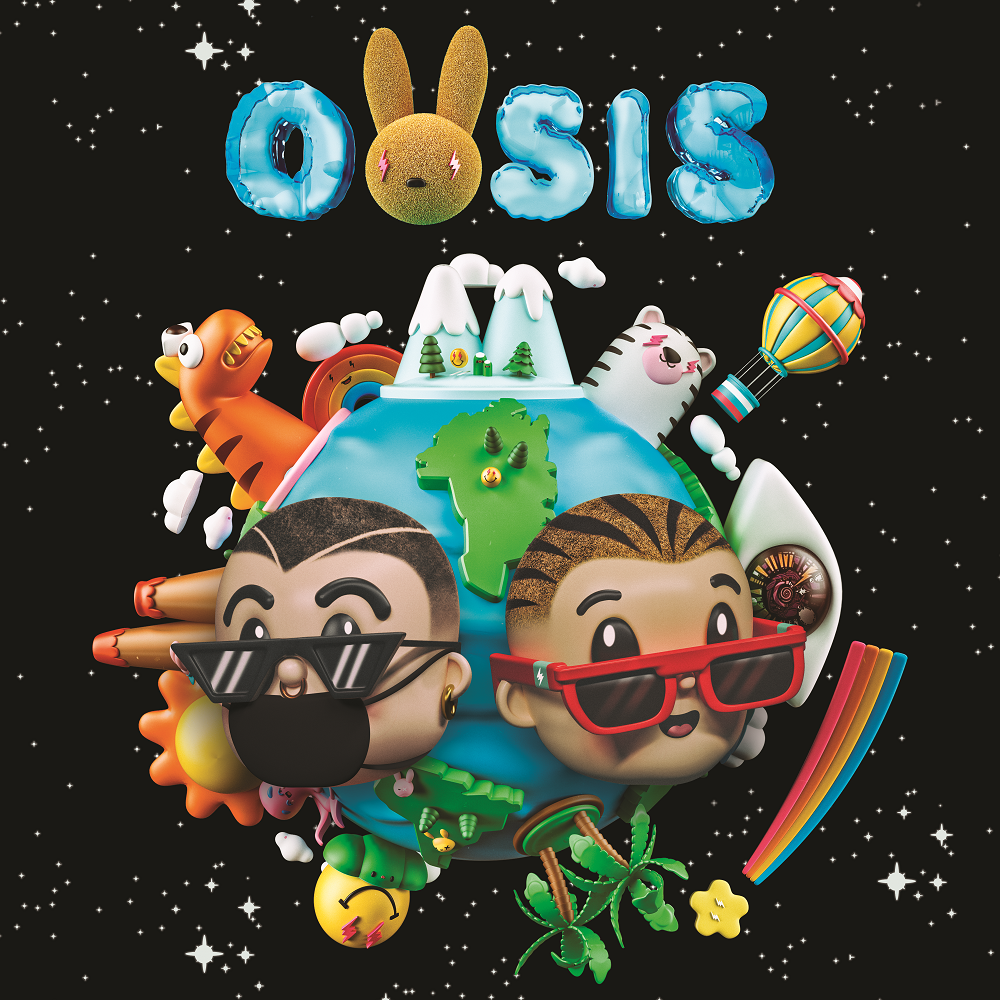As we close out the year, we’re taking a moment to look back on the albums that soundtracked our lives. And while narrowing it down to just 10 albums felt like a nearly impossible task, we’re proud to be able to call these our favorite albums of the year. Ranked by our editorial and freelance staff, these records are a snapshot of the musical movements and artists we believe are leading the pack in the Latinx and Spanish-language music. Here are our favorite albums of the year.
Editor’s Note: While this list features mostly artists of U.S. Latino and Latin American background, we have also included Spanish artists. As these groups are musically in constant conversation with each other, we have decided to include Spanish artists in our list of best albums of the year.
11
Honorable Mention: 'X100PRE' by Bad Bunny

Looking at the spread of urbano artists on this list, it may be surprising to think that before 2019, it wasn’t always the norm for them to borrow so easily across genres and sounds. But as we round out another year — and welcome a new decade — it’s clear that one artist brought this practice to the fore just before the year kicked off, no doubt inspiring much of the above. Bad Bunny’s X100PRE was technically released in late 2018 (on Noche Buena, no less), missing most End of Year lists; yet it’s our unofficial Best Album of 2019 for its longstanding influence. With his debut effort, Conejo Malo set a precedent for the changing landscape of urbano today: It can sound like “Tenemos Que Hablar,” a near pop-punk ballad, just as much as it can recall the boricua’s sister island of the Dominican Republic, alongside dembowsero El Alfa on “La Romana.” X100PRE represents the promise of a kid from Puerto Rico’s humble Vega Baja — a small town, on a small island — who still grew up to be one of the world’s most expansive artists today, and possibly, por siempre. –Jenzia Burgos
10
‘Joterías Bobas’ by Hidrogenesse

The Barcelona duo of Carlos Ballesteros and Genís Segarra have nothing to prove at this point, or so it seemed from this side. Irked by a comment made by a listener, Hidrogenesse took it upon themselves to make an album that was grander than what they had done, poppier and as absurd as they could be. The result was not an energetic response to an insult but rather a flamboyant display of what made them stand out in the first place – a reassertion that they’re happy on their own road – walking the line between deadpan humor and all-out shameless ridiculousness with stride. Finding inspiration in Mexico and ‘80s studio tricks like multitracked voices and fluttering synths, Joterías Bobas was Hidrogenesse at their most Hidrogenesse, with some of their best songwriting and fun experiments present, and a great reminder that they remain unpretentious master of sound. -Marcos Hassan
9
'System' by Debit

One of the most exciting chapters of the Latinx avant-electronic history in the late 2010’s has been about Debit becoming one of its most vital creative forces. Like her previous releases, System represented a chance for the Monterrey-via-New York producer to explore heavy existential questions through music made with technology, basing her explorations on the Mayan tzotzil tongue and how prehispanic cultures have been distorted throughout the years. Sonically, System reimagined tribal guarachero music from its perception as a novelty genre and into something more extreme, deconstructing sounds that correlate with each other in a minimalist fashion. While her raw material was somewhat jarring, it never overwhelmed the listener, and by keeping the dance element intact thanks to its heavy emphasis on the percussion, it kept the party going. With System, Debit proved that breaking new ground doesn’t always mean breaking the psyche of the listener. -Marcos Hassan
8
'Sombrou Dúvida' by Boogarins

The title Sombrou Dúvida, a contraction of the phrase in Portuguese “shadow or doubt,” came to Brazilian outfit Boogarins while jamming, and it clicked with a question they were asking themselves at the time: do we stay in our comfort zone or do we dive head-first to uncertainty? With the direction they took on their third album, the question answers itself.
Recorded in Austin and produced by Gordon Zacharias with the band’s own Benke Ferraz, the follow up to 2017’s Lá Vem a Morte is a step ahead in their vision of psychedelia, and it’s also a success in mixing and post-production. The foursome injected the 60s and 70s-inspired rock songs on the album with exhilarating sound manipulation in order to revolt the apparent traditional structure of their pop-laden compositions and giving them a noisy, abstract edge without feeling capricious or dense. The lyrics are as warped as the music, singing about universal themes like love and self-doubt but using metaphors and loose, ornate ideas as if they were flanger or fuzz pedals on the words instead of a guitar. And somehow they managed to retain the melodic aspect of their music that is the intact magnet that pulls us in over and over again. -Cheky
7
'Soy Piedra' by Belafonte Sensacional

At the unlikely intersection of cloudy-eyed troubadour, riveting punk agitator and undiscovered cumbia idol, Belafonte Sensacional’s Israel Ramirez somehow managed to write an album that oscillates wildly between breathtaking tearjerker and mosh-pit fire starter. Crafted under the watchful guise of producer Hugo Quezada (Robota, Exploded View), Soy Piedra is staggering in its ambition and even more surprising in its cohesiveness – building steadily from groovy set pieces like “Segundo Acto de Destreza Juvenil” and “La Noche Total” to piss-drunk rock n roll singalongs “Oh Sh*t Oh F*ck” and “Sácate a la Carretera.” But listen closely, because much of the magic on Soy Piedra is found in its beautiful subtlety between moments. The sublime poetry of “Las Distancias” and “K en el Abismo,” as well as the loopy feverishness of “Epic Aris” can be simply described as sensational. -Richard Villegas
6
'Foam' by Divino Niño

Divino Niño Couldn’t have picked a more inspired name for their first full-length album, which they released in June. Foam is a collection of songs so light and gauzy, they sound as though they might dissolve right as they reach your ears. The sounds, with their delicate blend of psychedelic wooziness and shoegaze-inspired prettiness, are a testament to the band’s tight-knit and effortless way of playing together, something that makes sense, given the members’ lengthy history. Guitarist Camilo Medina and Javier Forero actually knew each other as kids growing up in Bogota, and their paths crossed by chance years later when they had moved to Miami. Perhaps it’s those years of shared childhood memories that imbues tracks like “Coca Cola” and “Quiero” with a cosmic sense of nostalgia, as though the musicians are constantly walking down memory lane in the stars. -Julyssa Lopez
5
'Sueños' by Sech

On the cover of Sueños, Sech is accurately depicted as a cuddly bear planting his flag on the moon. With his debut album, he’s planting a flag in música urbana for Panama, his country where the sound originated from and for Afro-Latinx acts like himself. Whereas the genre can feel cold with all the Auto-Tune, Sech sings from the heart on songs like “X Ti” and “Boomerang.” His soulful voice makes sensual jams like “Que Mas Pues,” with irresistible heartache in his breakthrough hit “Otro Trago.” The 26-year-old singer-songwriter dreams big and comes into his own on this inventive album that beautifully blends R&B and reggaeton. A word to the wise: Don’t sleep on Sech. – Lucas Villa
4
'Almadura' by iLe

If any trace of Calle 13’s wide and influential shadow could be detected in Ileana Cabra’s Latin Grammy-winning debut album, 2016’s iLevitable, her follow-up more than obliterated what remained. Drawing from the rich sanctum of Latin American roots music, everywhere from nueva canción to bomba and bolero, iLe’s Almadura is nothing short of a triumph, astutely capturing the frustration and resilience of a continent in constant conflict. Stand out anthems like “Contra Todo,” “Temes,”“Odio” and “Ñe Ñe Ñé” ignite into blistering indictments of the injustices that have become common and corrosive stains on Latin American history – hacking her way through colonization, violence against women, political assassinations and institutionalized corruption one vibrato-loaded verse at a time. Almadura’s spirit is perfectly summed by its evocative title, which conveys a palpable mixture of rage and compassion that hardens the soul in order to overcome the bad times and thrive in the good. -Richard Villegas
3
'Ahomale' by Combo Chimbita

With their sophomore full-length and ANTI- Records debut, Ahomale, NYC-via-Colombia quartet Combo Chimbita crafted the boldest installment of their tropical futuristic narrative to date. The conceptual album is built around the figure of Ahomale – a name borrowed from the Yoruba language that means “adorer of ancestors”– a made-up deity that communicates ancestral knowledge through music. And while this idea looks attractive on paper, it only takes seconds to be sucked into this immersive spiritual journey and realize how successfully the band realized this concept.
With help from producer Daniel Schlett, Combo Chimbita were able to use the studio as another band member, enabling them to make sonic experiments that enriched their music. Ahomale sounds enormous and transcendental; it’s a psychedelic trip to a future that’s intrinsically connected to the past, most notably through the African and Afro-diasporic rhythms they masterfully filter on most of the 10 songs on the album, from champeta and bullerengue to cumbia. And right at the center stands Carolina Oliveros embodying Ahomale herself, letting her voice flow like an unstoppable torrent that sweeps us away with her knowledge and insecurities of the present she’s now experiencing. Ahomale is Combo Chimbita at their strongest; more than an album, it’s an unstoppable force. -Cheky
2
'Oasis' by Bad Bunny & J Balvin

For fans that had been following closely, Oasis was a longtime coming. Bad Bunny and J Balvin had been talking about a joint album for months before they dropped their short, eight-song EP in June, hailing it as a historic collaboration. Still, the sounds they came up with were somewhat unexpected: Most people likely envisioned huge, radical statements and production epic enough to capture urbano’s most global stars at the tippy-top of their careers.
But instead, Balvin and Bad Bunny filled Oasis with laid-back beats that were as cool and breezy as ice-cold cocktails on a beach. The album was almost too understated, leaning heavily on what Balvin likes to refer to as “vibes,” yet songs like “La Cancion” and “Que Pretendes” have had massive appeal precisely because of their slick and fresh fluency. The success of the release – a debut spot at the top of Billboard’s Latin Albums chart and a two-times platinum certification– seem almost secondary to what the partnership represents in a larger sense: a seismic moment in which two of the biggest names in the Latin industry demanded that the world watch the lightning show they set off when their powers collided. -Julyssa Lopez
1
'This Is How You Smile' by Helado Negro

In addition to being the most exquisite electronic effort of the year, Helado Negro’s This Is How You Smile was also among the most poignant. The album was a subtle meditation on healing, perseverance and renewal, inspired by Antiguan-American writer Jamaica Kincaid’s one-sentence short story, “Girl.” Like Kincaid, Helado Negro doled out quiet thoughts on surviving in a tumultuous era as a person of color, but his proposals were never overtly obvious or heavy-handed.
Instead, he buried his revelations into disarmingly beautiful soundscapes that glimmered with his intimate memories of splashing in Florida pools as a kid and seeing snow gather silently from his window in Brooklyn. These moments, tiny and loaded, powered Helado Negro and gave him strength. As he sings about them, it feels like he’s etching his name in cement to remind the world of the totality of himself and people like him. They’re even more moving in the context of a line from “Please Won’t Please,” easily one of the most heart-atomizing things he’s ever written: “Lifelong history shows/brown won’t go/brown just glows.” -Julyssa Lopez




